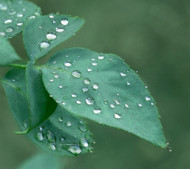Four ways you can improve your macro photography.
Posted by Leigh Diprose on 27th Aug 2018

Use a ball-head on your tripod.
One
of the biggest macro tips we can provide is to use a ball-head, like
the Arcatech
GP Ball-Head. When using one of these versatile heads,
you can position and reposition the camera quickly, as the joint
allows free movement, horizontally or vertically in any direction.
All it takes is one simple unlock knob, rather than three locks found
on less efficient 3-way heads. The difference can be the iconic shot
you capture, compared to the photo you miss because you were not able
to get the camera in the right composition in time.
If you
can’t afford a macro lens try an extension tube.
These
hollowed out tubes are convenient for two reasons. First, by
attaching an extension tube between your camera body and your
existing lens (say a kit lens), you increase the distance of the rear
element of your lens from the camera’s sensor. The advantage of
this will be a magnification of the focal length, enabling you to get
much closer to your subject. The second advantage of extension tubes
is their lower price in comparison to macro lenses. As this is the
case, they can be a great way to get started in macro photography.
One thing to keep in mind about extension tubes is that some
extension tubes do not have the necessary connections to allow the
electronics in your lens to function. If you plan on using a lens
without electronics any extension tube that is compatible with your
camera body and lens mount will work.
Use lighting equipment.
When
photographing subjects close up one of the issues, you may face is
the lack of available light. A macro lenses ability to gather light
at wide apertures is not significant due to the physical distance
from the subject. To counteract this, it is often necessary to use a
macro flash system or for a less expensive setup, would be to use LED
panels. Once you have the extra light, we recommended you set up a
light or flash on two sides of your subject as this will help
eliminate shadows.
Research what you are
photographing.
Once you have obtained the equipment, you
require it is worth doing a bit of research on what you will be
photographing. For instance, if you are looking at capturing images
of insects in their natural habitat find out when they will likely to
be around, what their breeding seasons are and what behaviours you
should expect to encounter and capture.
Some of these things
can be understood online, but understanding qualities like
behavioural characteristics are best left to fieldwork. By studying
the insect, you want to photograph; you will only be successful in
learning when to press the shutter button based on the insect's
behaviour at any given time in the year.
We would love to see some of your macro shots. If you like to share some of your macro shots please post them on our facebook page. https://www.facebook.com/Acratech/ https://www.facebook.com/Acratech/

